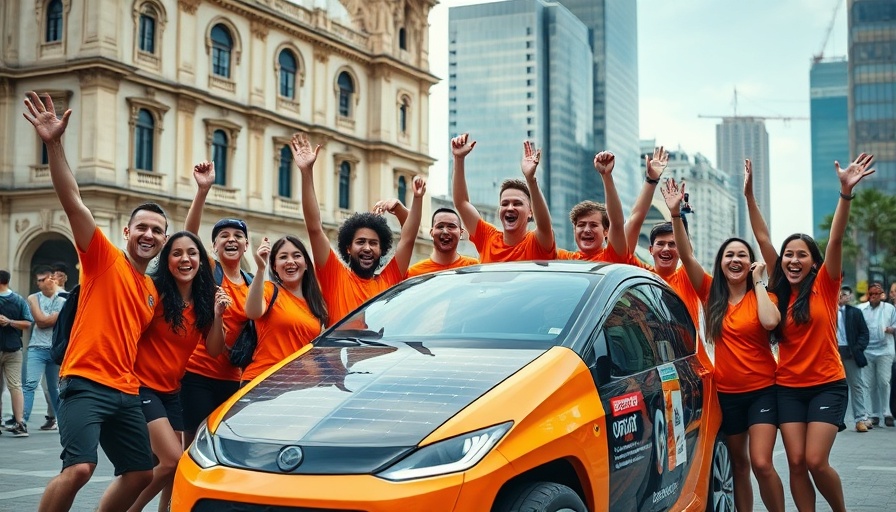
Harnessing the Sun: A New Era of Eco-Friendly Racing
In an exhilarating showcase of innovation and sustainability, the Bridgestone World Solar Challenge has concluded its latest edition, featuring teams racing solar-powered cars across the vast Australian Outback. This event, reminiscent of historic endurance races, such as the Le Mans, challenges engineers and motorsport experts to rethink how vehicles can operate efficiently in an eco-conscious world.
Redefining Aerodynamics with Creative Designs
Participants faced unique challenges this year, notably racing during a time when the sun shines less brightly than in Australia’s summer months, with 20% reduction in solar exposure. The cars, likened to aircraft carriers in their design, featured extensive solar panels to ensure adequate energy to complete the taxing 2,000-mile journey from Darwin to Adelaide. The external shapes were not only a nod to aerodynamics but also to unique and functional design.
The artistic flair of these vehicles included narrow undercarriages that minimize air resistance, a crucial factor since much of a car's energy is devoted to overcoming wind drag. Notably, many teams employed innovative fins, which enhanced both stability and speed – a radical concept that is part of the event’s goal of finding sustainable solutions.
Community Collaboration and Technological Advancements
The highlight of this year’s challenge was the University of Michigan’s Millennium car, which ingeniously combined sail-like fins to harness wind for additional thrust, making it a fascinating example of how teamwork and technology intertwine. As Bridgestone Vice President Hiroshi Imai remarked, these competitions are a window to the future, emphasizing that even next-gen technology can emerge from such inventive formats.
The Champions of Innovation
Ultimately, it was the Dutch team, Brunel Solar, that captured victory with their Nuna 13 vehicle, achieving impressive speeds without burning extra energy. With two fins designed for efficiency and performance, they completed the race in just under 34 hours. This victory is more than just a win; it's a testament to how creativity and technology coalesce to address existing challenges in transportation.
The Future of Sustainable Transport
Events like the Bridgestone World Solar Challenge are not just races; they are live laboratories where the future of sustainable driving takes shape. As these teams continue to innovate, we can look forward to not only paving the road for solar vehicles but also integrating broader ecological practices into our everyday lives. Each journey teaches us more about the potential of solar energy, inspiring communities to rethink mobility in an era where sustainability is not just an option but a necessity.
In a world pushing towards cleaner and greener solutions, these inspiring stories from the Australian Outback crystallize the essence of community and collaboration—a reminder that the race towards sustainability is one we can all contribute to.
 Add Row
Add Row  Add
Add 




Write A Comment